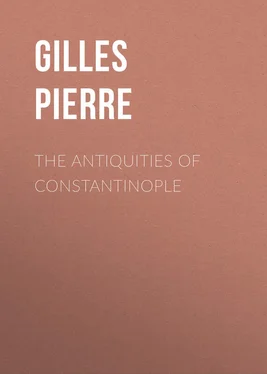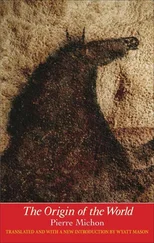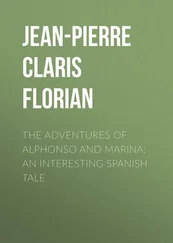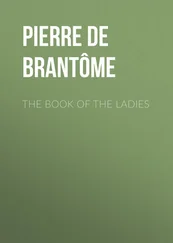Pierre Gilles - The Antiquities of Constantinople
Здесь есть возможность читать онлайн «Pierre Gilles - The Antiquities of Constantinople» — ознакомительный отрывок электронной книги совершенно бесплатно, а после прочтения отрывка купить полную версию. В некоторых случаях можно слушать аудио, скачать через торрент в формате fb2 и присутствует краткое содержание. Жанр: foreign_antique, foreign_prose, на английском языке. Описание произведения, (предисловие) а так же отзывы посетителей доступны на портале библиотеки ЛибКат.
- Название:The Antiquities of Constantinople
- Автор:
- Жанр:
- Год:неизвестен
- ISBN:нет данных
- Рейтинг книги:3 / 5. Голосов: 1
-
Избранное:Добавить в избранное
- Отзывы:
-
Ваша оценка:
- 60
- 1
- 2
- 3
- 4
- 5
The Antiquities of Constantinople: краткое содержание, описание и аннотация
Предлагаем к чтению аннотацию, описание, краткое содержание или предисловие (зависит от того, что написал сам автор книги «The Antiquities of Constantinople»). Если вы не нашли необходимую информацию о книге — напишите в комментариях, мы постараемся отыскать её.
The Antiquities of Constantinople — читать онлайн ознакомительный отрывок
Ниже представлен текст книги, разбитый по страницам. Система сохранения места последней прочитанной страницы, позволяет с удобством читать онлайн бесплатно книгу «The Antiquities of Constantinople», без необходимости каждый раз заново искать на чём Вы остановились. Поставьте закладку, и сможете в любой момент перейти на страницу, на которой закончили чтение.
Интервал:
Закладка:
Over the Gate of Xylocerum ( Xylocercum or Xylocricum ) in Byzantium , thus:
These Walls by Theodosius’ Royal Will ,
And Constantinus Prefect of the East ,
In sixty Days, surprizing Speed! were built .
Over the Gate of Rhegium is this Inscription:
Great Constantinus, Prefect of the East ,
In sixty Days this stately Building finish’d .
The Reason why Constantine order’d Byzantium to be call’d New Rome , or Queen of the Roman Empire , is mention’d by Sozomen and others; namely, that God appear’d by Night to Constantine , and advised him to build a City at Byzantium worthy his own Name. Some say, that as Julius Cæsar , upon a Plot form’d against him, judg’d it necessary to remove to Alexandria or Troy , stripping Italy at the same time of every thing that was valuable, and carrying off all the Riches of the Roman Empire, leaving the Administration in the Hands of his Friends; so it is said of Constantine , that perceiving himself to be obnoxious to the People of Rome , having drain’d the City of all its Wealth, went over at first to Troy , and afterwards to Byzantium . Zosimus , an implacable Enemy to the Christian Name, alledges an execrable Piece of Villany, as the Cause of his Removal. Constantine , says he, when he had murder’d Crispus, and had been guilty of other flagrant Crimes, desiring of the Priests an Expiation for them, their Answer was, That his Offences were so many and enormous, that they knew not which way to atone for them; telling him at the same time, that there was a certain Ægyptian who came from Spain to Rome; who, if he had an Opportunity of speaking to him, could procure him an Expiation, if he would establish in his Dominions this Belief of the Christians, namely, That Men of the most profligate Lives, immediately upon their Repentance, obtain’d Remission of Sins . Constantine readily closed with this Offer, and his Sins were pardon’d. At the Approach of the Festival, on which it was usual with him and his Army to go up to the Capitol, to perform the customary Rites of their Religion ; Constantine fearful to be present at that Solemnity, as being warn’d to the contrary by a Dream, which was sent him from the Ægyptian, and not attending the holy Sacrifice, highly disgusted the Senate, and the whole Body of the People of Rome. But unable to bear the Curses and Scandal they threw upon him on that Account, he went in Search of some Place or other equally famous with Rome, where he might build him a Palace, and which he might make the Seat of the Roman Empire, and that at last he had discovered a Place between Troas and Old Ilium, fit for that Purpose; and that there he built him a Palace, laid the Foundations of a City, and raised part of a Wall for its Defence: But that afterwards disapproving the Situation, he left his Works unfinish’d, and settled at Byzantium; and being wonderfully taken with the Agreeableness of the Place, he judged it in all respects to be very commodious for an Imperial Seat . Thus far Zosimus , a great Favourite of Julian the Apostate, and an inveterate Enemy to Constantine on the account of his Religion; to whose Sentiments I have so perfect an Aversion, that I cannot give the least Credit to those Enormities he charges him with, and of which he had the greatest Abhorrence, as being a Prince of remarkable Clemency and Goodness, which I am capable of proving abundantly, but that it would prove too great a Digression in the present History. The Truth of it is, that Sozomen and Evagrius both have sufficiently refuted these malicious Reflections. In these Calumnies, I say, I entirely differ from Zosimus , yet in his Description of the Extent, and Compass of the City, I am wholly in his Opinion; who, though an Enemy to Constantine , yet is forced to acknowledge him to have built so large, so noble, so magnificent a City. I am the more induced to give Credit to his History in this Respect, because he lived many Ages nearer to the Time of Constantine than our modern Monks , who, in the Books they have written of Constantinople , give the following Account of it; namely, that Constantine built a Wall from the Tower of Eugenius (which was the Boundary of old Byzantium ) to St. Anthony ’s Church, and the Church of the Blessed Virgin , call’d Rabdon , quite up to the Exacionion ; and that at a Mile’s Distance, it passed on to the old Gates of the Church of St. John the Baptist , stretching itself farther to the Cistern of Bonus , from whence it extended itself to the Armation , and so winded round to St. Anthony ’s Church again. I should give my self the Trouble to examine this Account, but that I know the Authors are so fabulous, that they are no ways to be depended upon. But this I look upon to be an intolerable Blunder, that they place the Church of St. John Baptist within the Walls built by Constantine , whereas for many Years after his Death it continued without the City: Of which, and many other Errors, I shall take Notice in the following History.
Chap. IV.
Of the present Figure, Compass, Length and Breadth of Constantinople
THE Figure of Constantinople is triangular, the Base of which is that Part of it which lies Westward: The top Angle points to the East, where the Peninsula begins. But both the Sides of this Triangle are not equal; for that Side which lies westward winds round the Angle of the Bay in the Figure of a Half-Moon. At a great Distance from thence, it winds about again from North to South. But the South Side of this Triangle veers about to such a Breadth, that if you should draw a strait Line from one Angle of it to the other, it would cut off a Creek, which, in the Middle of it, is at least a quarter of a Mile over. But that Side which faces the North, and is call’d Ceras , the Bay or Horn, should you draw a strait Line over it from one Angle to another, it would cut off not only the whole Bay, but also a part of Galata . For this Side inflects inwards in such a manner, that from each Point it circulates in the Form of a Bow, having two smaller Windings of the same Figure in the Middle of it, but lies inwardly into the Continent so far, that the two Horns or Ends of the Bow, which includes them, no ways intercept the Prospect of the Angles of the larger Arch. ’Tis upon this Account that Constantinople may rather seem to be of a triarcular, than a triangular Figure. For right Angles never project beyond their Sides, nor do they inflect inwards. But all semicircular Figures are in a manner both convex and concave also. So that if these three Angles, so far as they project beyond the main Body of the City, were divided from it, Constantinople would form a square oblong Figure, little more than a Mile broad, and almost three times as long. But be that as it will, all are of Opinion, that this City ought to be look’d upon to be of a triangular Figure, because it has three Sides; one of which that faces the Propontis , and the other on the side of the Thracian Continent, are of an equal Length; the third, adjoining to the Bay, is about a Mile shorter than the other two. This City is computed to be near thirteen Miles in Compass, although Laonicus Chalcondylus , in his History of the Ottomans , assures us, that Constantinople contain’d in Compass an hundred and eleven Furlongs; the Length of it, extending itself over the Promontory with six Hills, is no more than thirty Furlongs; but if the Figure of it was an equilateral Triangle, it would not be much above nine Miles in Circumference; and could we suppose its hilly Situation to be widen’d into one large Plain, yet then it would not be so large in Compass as the Inhabitants generally reckon it, viz. eighteen Miles. It is observable, that Constantinople does not contain more Bays of Building, as it is situate upon Hills, than it would if it were built upon a Plain; because you cannot so conveniently build upon a Declivity, as you can upon a Level. Nor does the Reason equally hold good, as to the Number of its Houses, and the Number of its Inhabitants. For Constantinople can contain more Men as it is seated upon Hills, than it could if it were seated on a Plain. The Breadth of this City varies in several Places. From the East to the Middle of it, ’tis at least a Mile in Breadth, but in no Place broader than a Mile and a half. It divides itself afterwards into two Branches, where ’tis almost as broad as ’tis long. I can compare it, as to its Figure, to nothing more properly than to an Eagle stretching out his Wings, and looking obliquely to the left, upon whose Beak stands the first Hill, where is the Grand Seignor’s Palace. In his Eye stands the Church of St. Sophia ; on the lower part of the Head is the Hippodrom ; upon his Neck are the second and third Hills, and the remaining part of the City fill up his Wings, and his whole Body.
Читать дальшеИнтервал:
Закладка:
Похожие книги на «The Antiquities of Constantinople»
Представляем Вашему вниманию похожие книги на «The Antiquities of Constantinople» списком для выбора. Мы отобрали схожую по названию и смыслу литературу в надежде предоставить читателям больше вариантов отыскать новые, интересные, ещё непрочитанные произведения.
Обсуждение, отзывы о книге «The Antiquities of Constantinople» и просто собственные мнения читателей. Оставьте ваши комментарии, напишите, что Вы думаете о произведении, его смысле или главных героях. Укажите что конкретно понравилось, а что нет, и почему Вы так считаете.












